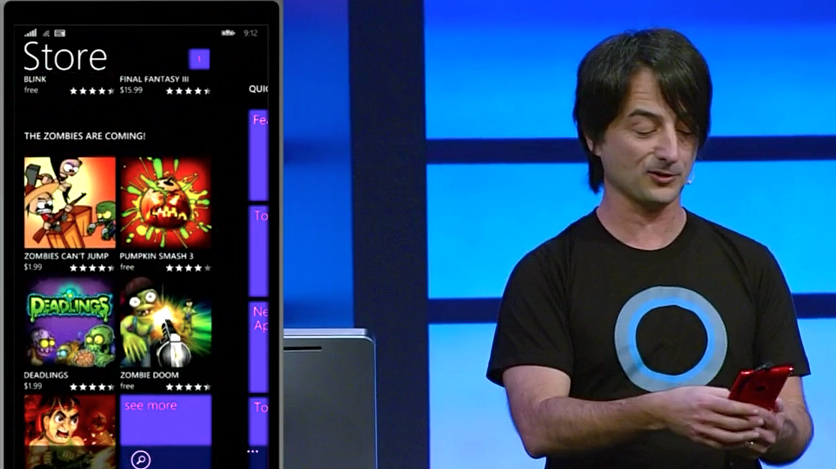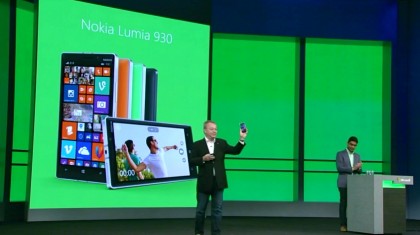How Microsoft got it right at Build 2014
The first big keynote since Ballmer

Build 2014 didn't contain a huge number surprises, with modest tweaks being made to Windows 8.1 in the form of Windows 8.1 Update 1 and the announcement of Windows Phone 8.1 as expected.
What wasn't expected was that Microsoft has said it will re-introduce the Start Menu to a future version of Windows 8 - possibly Windows 8.2. Interestingly Microsoft has also bowed to pressure and elected to bring back the traditional start menu in the desktop mode.
This does signal that Microsoft is listening to user concerns and is willing to act upon them in order to improve the experience. It's like Microsoft has realised that the answer to its Windows navigation woes was there all along.
And for that reason alone, Microsoft got it right at Build 2014.

But it did well in other areas, too, bowing to the needs and wants of developers. Universal apps that are coded to work on phones, desktops and tablets will now also run natively in desktop, further removing the distinction between the Start screen and the desktop - in Windows 8.1 Update 1 you'll also be able to get to the Taskbar from any screen.
But there were some great tech thrills and spills. The biggest addition is Cortana to Windows Phone which could prove to be a break-through feature when consumers see what it can do for them. Detractors will compare it to Siri, but it has some unique tricks up its sleeve.
Microsoft's Joe Belfiore called Cortana a "truly personal digital assistant for Windows Phone" and it functions in much the same way as Siri or Google Now, performing tasks via a spoken command and offering information intuitively. She — Cortana's voice is female — completely replaces Bing search on Windows Phone.
Sign up to the TechRadar Pro newsletter to get all the top news, opinion, features and guidance your business needs to succeed!
In a similar style to Google Now's "Magic Wand" feature, Cortana features a Notebook which contains all of the things she can keep track of, including a "close friends" list and an option for quiet hours during which she will not bother you.
Cortana's functionality extends to keeping track of your appointments, finding you restaurants (via data from Yelp), forecasting the weather, reminding you of events and answering questions on a myriad of topics. In the demo Microsoft showed off Cortana's integration with third-party services such as Facebook, Hulu and Skype with more to come via APIs from Microsoft.

Windows Phone has finally gotten a notification hub in its 8.1 update. Called Action Centre, the hub shows quick settings options (Bluetooth, Airplane mode, WiFi and cellular data shut off) along with battery percentage (previously buried in the settings menu) as well as showing you all of your notifications. Microsoft has also reworked the lock screen allowing developers the opportunity to show you notifications in exciting new ways.
The home screen has also been changed to allow a "high density" option that features more tiles. A background can also be set underneath the tiles, allowing for a more customisable experience on Windows Phone.
While there are no particular surprises here, it is interesting to see Microsoft move into the league of the big boys, introducing a key feature to compete with Siri and Google Now, as well as other more fundamental features such as a notification hub. None of the additions in 8.1 are groundbreaking, and neither should they be since it is only a point one update. They do, however, improve the experience of Windows Phone, increasing the appeal to new users.
Windows 8.1 Update 1 helps mouse and keyboard
The improvements made in Windows 8.1 Update 1 are not groundbreaking, but do improve the experience on desktops and laptops that use a mouse and keyboard as opposed to a touch screen. Microsoft has re-introduced many of the key software buttons that Windows 8 and 8.1 lacked, meaning the experience is far more pleasant on the majority of PCs.

Microsoft has taken a two steps forward, one step back approach with Windows 8. It introduced a radical redesign that was predominately focused on touch and then gradually began reintroducing key aspects of the UI that focus on non-touch users.
Alongside Windows 8.1 and Windows Phone 8.1, Microsoft also played to those keen for hardware announcements - as part of the show Nokia announced three new phones: the Lumia 930, the Lumia 630 and 635.
All three will launch with Windows Phone 8.1 with the 930 becoming the new flagship Nokia — and now Microsoft — device. The 930 has an impressive 5-inch full HD display rocking a pixel density of 441 pixels per inch along plus a Qualcomm Snapdragon 800 processor running at 2.2GHz on four cores with 2GB of RAM and 32GB of internal storage. The 930 will become available in June in Europe.
It looks like a cracking high-end device while the 630 and 635 may have what it takes to compete at the low-end, but none of them are likely to drastically change the future of Nokia or Microsoft.

As mobile analyst Benedict Evans notes on Twitter, the market for these devices does not appear to be huge despite Nokia's best efforts at making the devices as attractive as possible. Perhaps Microsoft's near unlimited pockets can aid the advertising of the Lumia range but until then Nokia needs to produce something truly spectacular to break through.
But overall Microsoft did rather well during the opening Build keynote. It teased a future OS update, wowed with Cortana and appeased those wanting hardware. It wasn't exceptional or completely stunning, but it was pretty solid. And that's about all you can ask from a company needing to get back on track with consumers and developers alike.
Max Slater-Robins has been writing about technology for nearly a decade at various outlets, covering the rise of the technology giants, trends in enterprise and SaaS companies, and much more besides. Originally from Suffolk, he currently lives in London and likes a good night out and walks in the countryside.